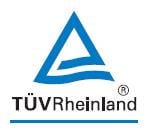Our experts answer frequently asked questions on the planned international standard ISO 45001 which is expected to be published in March/April 2018. Do you have any further questions? Make an appointment!
1. WHAT’S NEW ABOUT ISO 45001?
All the required activities for the systematic implementation of legislation and requirements on occupational health & safety are now initiated and regulated top-down. The management tier of a company therefore expects occupational health & safety to assume a central role and be more heavily integrated into the processes.
Like the revised ISO 9001 standards for quality management and ISO 14001 for environmental management, ISO45001 follows what is referred to as ‘high level structure’. The new ISO 45001 standard will explicitly facilitate the efforts of companies to bring together all relevant aspects in the fields of quality, occupational health and safety and environmental protection, for example, in one management system. The improved standard structure permits a standardised application of terminology as well as a simplification of the interpretation of requirements of the relevant management system. Thus, the new ISO 45001 also offers a combination certification with other standards. In addition, the new ISO 45001 explicitly takes account of completely outsourced processes as well as persons who are not permanently employed but who are under the responsibility of the company.
2.FOR WHICH COMPANIES WILL CERTIFICATION ACCORDING TO THE NEW STANDARD BE APPROPRIATE?
The current OHSAS 18001 certification is suitable for any company in any industry. This will not change with the new international ISO 45001 standard. If you wish to permanently reduce the occupational health & safety-related risks for your employees, visitors as well as suppliers and service providers, have your health & safety management certified!
3. WHAT WILL AN ISO 45001 CERTIFICATION SPECIFICALLY ENTAIL?
The aim of an occupational health & safety management system which is ISO 45001-certified is to reduce the risk of injuries and illness in the workplace and where possible to avoid them entirely. You will therefore benefit from the opportunity to bring your strategic direction in line with your occupational health & safety management system. Furthermore, ISO 45001 emphasises the responsibility of top management and thus extends beyond the scope of employee training.
4. WHEN WILL ISO 45001 BE PUBLISHED?
The first Draft International Standard (DIS) for ISO 45001 was rejected in May 2016. In July 2017 the second draft version of ISO 45001 was accepted. In September 2017, the international standards committee will evaluate the results of the ballot and the comments and decide on
this basis whether a final draft is required or whether the standard will be published in 2017. In view of the number of comments, we assume that a Final Draft will be produced and that the standard will be published in March 2018.
5.WILL THE NEW ISO 45001 STANDARD SUPERSEDE THE CURRENT OHSAS 18001 CERTIFICATION?
It has not been conclusively clarified whether the planned international standard ISO 45001 will fully replace OHSAS and supersede it or whether it will apply in parallel to it. The ISO committee is also considering this question. As soon as a decision has been made, we will make you aware of it online.
6. HOW WILL CERTIFICATES BE CONVERTED/ISSUED?
According to the current situation, companies that are certified in accordance with OHSAS 18001:2007 can convert their occupational health & safety management system to ISO 45001, provided this is de ned as a basis for certification by the International Accreditation Forum (IAF). For companies that opt for conversion and are already certified according to OHSAS 18001, therefore, all changes and specific features which ISO 45001 will entail gain relevance. Currently, following the official publication of the standard, there will be a three-year transition period for conversion to ISO 45001.
7. WHAT WILL THE BENEFITS OF THE PLANNED ISO 45001 CERTIFICATION BE?
You can reduce the number of accidents in the workplace using a systematic approach to aspects of occupational health & safety with ISO 45001 certification from us regardless of your industry or the size of your company. Sources of errors are identified and eliminated. You can therefore ensure your compliance with statutory and regulatory requirements for occupational health & safety protection.In addition, you will increase awareness surrounding safety as well as the levels of motivation and qualifications of your employees, suppliers and service providers as well as enhancing your good name with clients, suppliers, authorities and investors as a safe and reputable company.
8. WHAT WILL SET ISO 45001 APART FROM OTHER HEALTH & SAFETY CERTIFICATION SYSTEMS?
ISO 45001 certification is an international recognition of a health & safety management system for every company in every industry. The SCC (Safety Certificate Contractors), on the other hand, is only valid for subcontractors in industry, the SCP certificate (Safety Certificate Personnel Leasing)is only valid for HR service providers and the SCCP Certificate (Safety Certificate Contractors for Petrochemicals) is only valid for service providers within the petrochemicals industry. Alongside these specialisations, ISO 45001 is a universal solution for certified occupational and health & safety management at an international level.9. WHAT SIGNIFICANCE DOES OCCUPATIONAL HEALTH & SAFETY HAVE TODAY?
Increasing competitive pressure and ever-faster response times mean that there is no longer any room for error for companies today. Industrial accidents and downtime usually lead to disruption to the production and supply process and can in the worst case scenario result in order cancellations.An occupational health & safety system will allow you to demonstrably reduce the number of accidents through a systematic approach to aspects of health & safety.
--
Consult our experts for more information:



